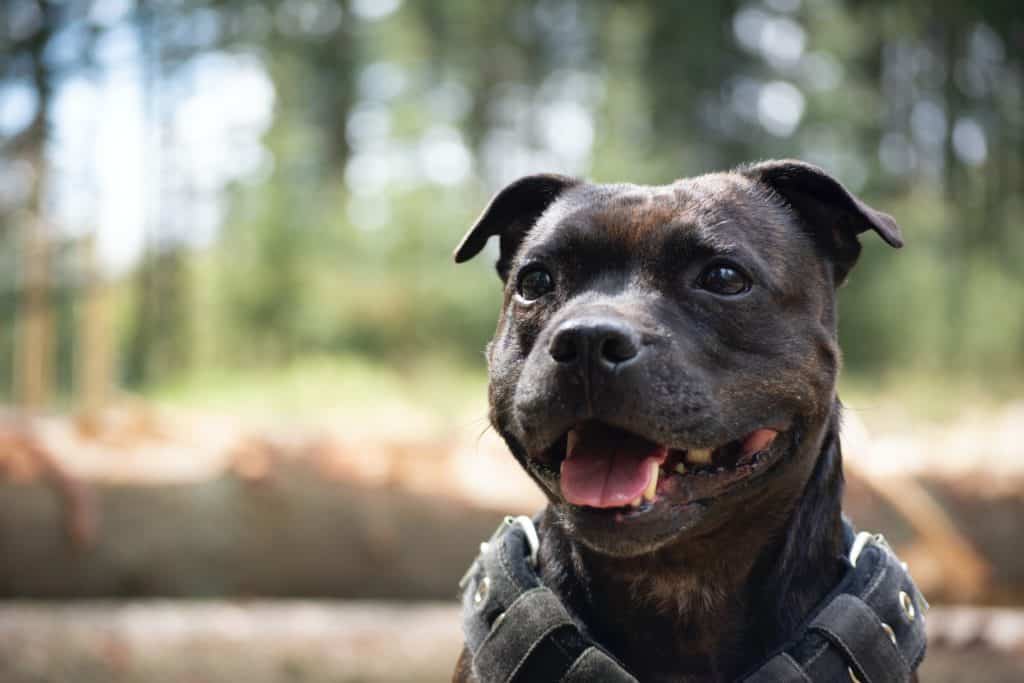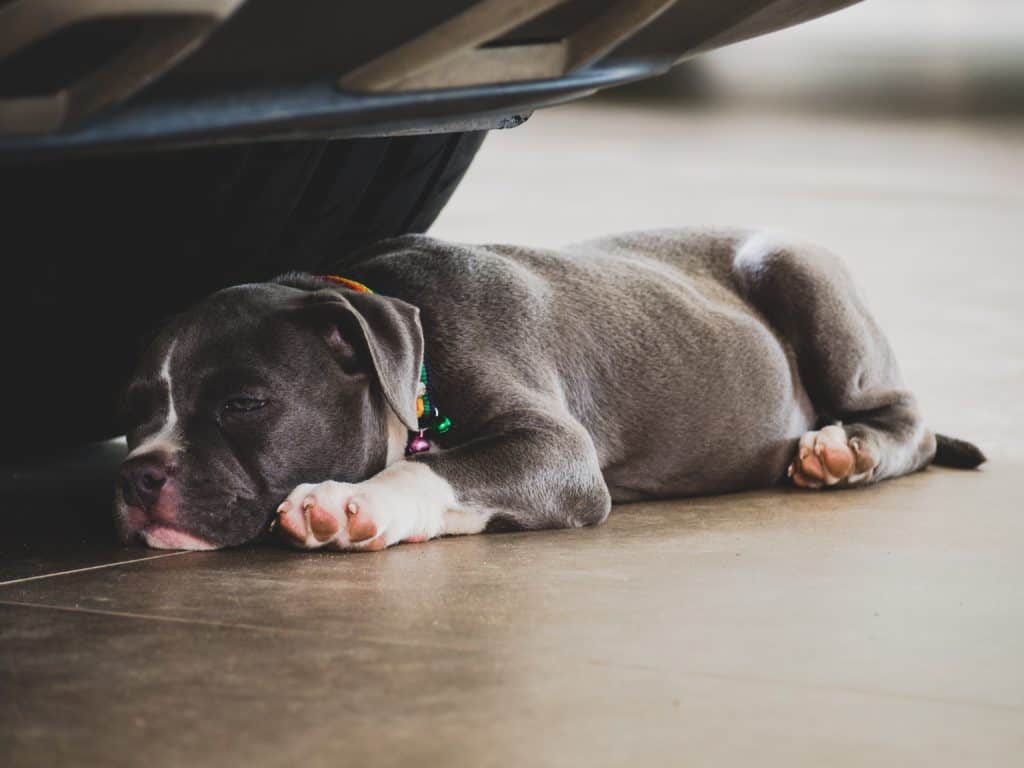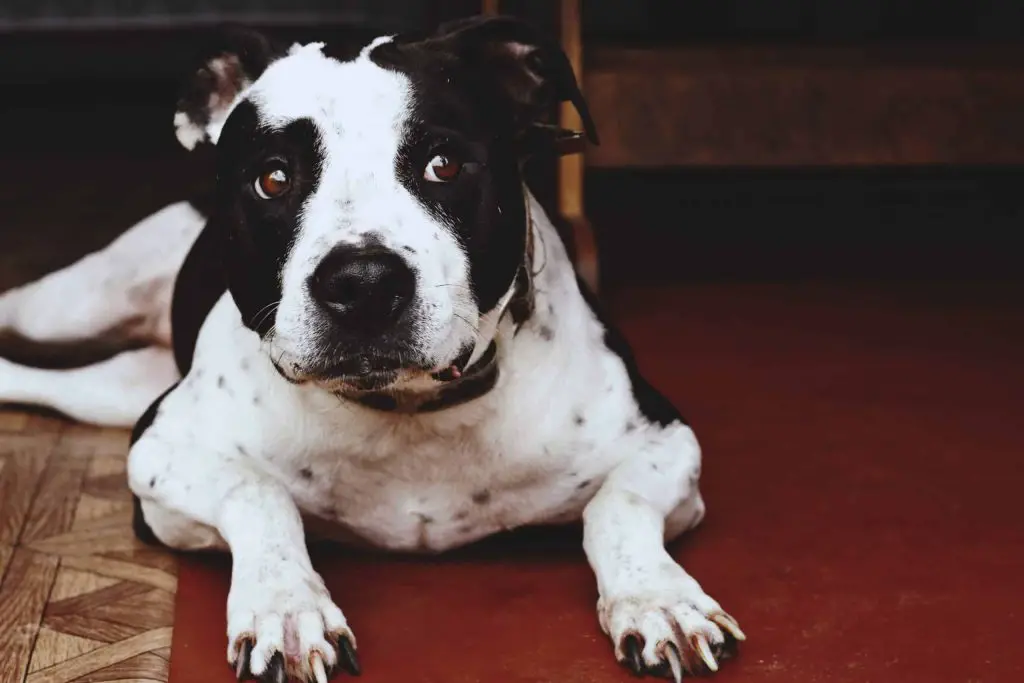Ever wonder if dogs can get the same skin issues as humans? Specifically, skin issues like acne and pimples. Can dogs get pimples? Yes, dogs can have canine acne that may show up as whiteheads, blackheads, or enclosed pimples. However, there are differences in how it is diagnosed and treated for canines.
In this article, Can Dogs Get Pimples, you will learn about canine pimples, how it is diagnosed, why dog’s develop pimples, and recommendations on how to treat acne.
- Can Dogs Get Pimples, are they?
- Why Do Dogs Get Pimples?
- How is Canine Acne Diagnosed?
- Recommendations for Treatment
- Preventing Dog Pimples
Can Dogs Get Pimples: What are they?
Dog pimples are usually associated with a buildup of oil, bacteria, or dead skin cells inside a hair follicle.
Another name for pimples is canine acne which is an inflammatory disorder of the skin that can show up as pimples in multiple areas on a dog’s skin. Can dogs get pimples? Certainly, they are most commonly found on the muzzle, lips, chest, belly, and genital area on a dog.
A mild case of canine acne might show itself with red bumps and pimples on the dog’s skin. Severe cases could have more generalized swelling in the lips and muzzle area. They might have what looks like bleeding wounds or scabs on the face from an outbreak.
Can dogs get pimples? Signs and Symptoms of Dog Pimples:
- Red bumps
- Swelling
- Localized redness
- Blackheads
- Pus in the Lesion area
- Infection
- Itching – your dog frequently rubs face across carpet
It is normal for your dog to have a pimple or two as a puppy. If your dog continues to have pimples as they age, even after preventative measures, consult your local veterinarian.
Related Articles:

Can dogs get pimples? Why Do Dogs Get Pimples?
There are many reasons a dog can get pimples. Reasons could include debris irritating a skin follicle, genetic predispositions for certain breeds, environmental or food allergies, trauma to the skin, or even infections from skin mites.
Irritated Follicles. Dogs can have debris or bacteria irritate their skin and cause a breakout. Many dog owners first notice a breakout near the chin or muzzle area of their dog. An outbreak in this area could be from their food or water dish.
Plastic dishes or ceramic dishes that are cracked can harbor bacteria and retain oils and dirt. Dog dishes that are made from stainless steel can be a better option. Regularly cleaning your dog’s dish after meals is a good preventative.
Genetics. Can dogs get pimples from genetic predisposition? Certain breeds can be more commonly affected like Boxers, English bulldogs, Great Danes, German shorthaired pointers, Weimaraner’s, and Mastiffs.
Trauma to the Skin. Trauma can happen from dog’s playing together, rolling on the grass or rubbing against carpet can all be reasons for follicles to get irritated or clogged. Short haired dogs would be more prone to hair follicle’s becoming clogged. Once a hair follicle is clogged, it can cause inflammation and a bacterial infection resulting in a pimple formation.
Environmental Allergies. Underlying skin irritations and infections that show results as canine acne could be due to allergies. Common allergies in dogs are grass pollen, molds or tree pollen. Pimples can result from food allergies to certain proteins as well.
If your dog’s mild case of acne or pimples appear to be getting worse, it would be wise to get an appointment with your veterinarian. Once your dog’s allergies are diagnosed, you should see less pimples showing up on your dog.
Related Articles:
- How to Keep Your House from Smelling like Dog
- A Review of the Top 5 Best Brooms For Dog Hair
- A Review of the 4 Best Dog Shampoos for Itchy Skin
Can dogs get pimples? How is Canine Acne Diagnosed?
Canine acne that is located on the muzzle area is often referred to as “muzzle folliculitis,” which is an inflammation of one or more hair follicles. Localized redness and itching will accompany the pimples.
Once you notice that your dog’s pimples or red bumps on their skin are worsening, it is time to have them checked out by a veterinarian. Most vets will diagnose by clinical appearance of the pimples and skin irritation.
For severe cases, your veterinarian may take a biopsy of the skin on your dog. This is especially true for dogs that have reoccurring acne. Your vet may want to check for any skin disorders.
In the case of potential infection, the veterinarian might do a bacterial culture. Once the type of bacteria is identified, then they can prescribe the appropriate treatment.
Related Articles:
- A Review of the 5 Best Dog Brushes For Short Hair
- A Review of the 5 Best Waterless Shampoos for Dogs

Can dogs get pimples? Recommendations for Treatment
This article is not a replacement for professional veterinarian care, if you have any concerns about your dog’s health or skin care, call your local vet.
First you want to reduce bacterial contaminations, so resist “popping” the pimples. Squeezing the lesions or pimples on your dog’s muzzle or chin will increase the likelihood of hair follicles rupturing and increasing inflammation in that area.
For an occasional pimple or for mild cases of acne, flush out the hair follicles with warm water.
If you suspect it is from bacteria found in their food and water dishes, daily wash the dishes in warm soapy water. Consider switching to dishwasher safe ceramic dishes or stainless-steel food and water dishes.
Your dog’s vet may recommend a special cleanser for washing your dog. In severe cases, they might administer steroids to reduce the inflammation in the follicles.
Over the counter creams and treatments designed for humans are not suitable to be used on your canine. Always consult with your dog’s vet before using any treatment creams designed for pimples.
When you notice that your dog is susceptible to pimples, it is best to take preventative measure in order to reduce breakouts.
Related Posts:
- How to Stop Your Dog from Peeing When Excited
- How to Build an Outdoor Dog Potty Area on Concrete
- How to Stop a Dog from Pooping in the House at Night
Can dogs get pimples? – Preventing Dog Pimples
There are four action steps you can take to prevent your pup from future dog pimples.
- Improve Hygiene. The first step you can take is cleansing your dog with warm water and soap designed for dogs. Cleanse your dog’s muzzle, chest, paws, and genital area to prevent follicle infections.
- Dry Off Dog. Keep your dog’s muzzle area dry. Bacteria grows well in damp areas. This is especially important for dog’s that are messy drinkers.
- Clean Teeth. Make cleaning your dog’s teeth part of their healthy routine. Bacteria in their mouth can spread to their muzzle and chin area.
- Wash Toys & Bowls. Daily wash your dog’s dishes with warm water and soap. Toys should be washed regularly to prevent bacteria from building up. Many dog toys are dishwasher safe and fabric toys can often be tossed in the washing machine.
As a reminder, do not pop your dog’s pimples as that would increase inflammation and can traumatize your dog’s skin.
Related Articles:
- Ultimate Guide: How To Take Care Of A Puppy
- Ultimate Guide: How To Take Care Of A Dog
- Ultimate Guide: How To Take Care Of A Senior Dog
- The Benefits of Owning a Dog
- Top 12 Tips for First Time Dog Owners

Can dogs get pimples?
Dogs can get pimples, just like humans. Canines can have a buildup of oil, irritated or infected hair follicles. As a dog owner, you are responsible for caring about the condition of your dog’s skin. Frequently check your dog for any unusual bumps or pimples.
Canine pimples can be itchy and uncomfortable for your dog. Once you understand why your dog has pimples you can find an effective treatment.
Prevent pimples by increasing your dog’s hygiene, keeping them dry, washing toys and your dog’s dishes. It is best to keep your dog healthier by preventing skin infections and inflammation when possible.
Please read our Legal Disclaimer


